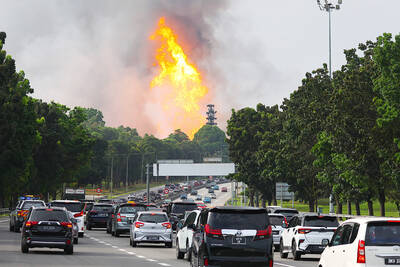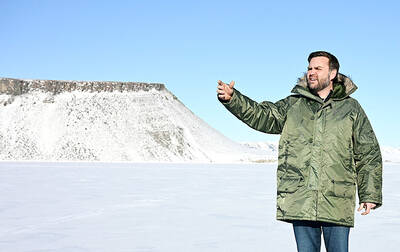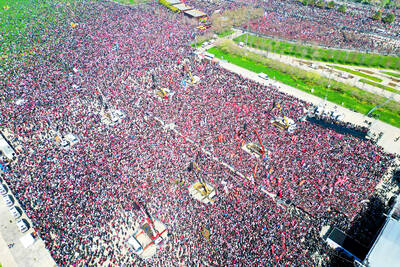The images are unnerving: hooded, swift-footed youths infiltrating protest rallies in the heart of tourist Paris, smashing shop windows, setting cars on fire, beating and robbing passers-by and throwing all sorts of objects at the riot police.
They are called the casseurs -- the smashers. With more huge marches planned for next week as part of a continuing protest of a new jobs law, the casseurs are the volatile chemical that could ignite an even bigger crisis for the government than the impasse over the law itself.
They create primarily a law-and-order problem, evoking the rioting that gripped the troubled suburbs of French cities for weeks last fall. Pumped up by news coverage, these youths boast of trying to steal cellphones and money and vow to take revenge for the daily humiliation they say they endure from the police.
But the casseurs also create an image problem, as striking television images and photographs of youths, some of them masked, and the police using tear gas and water cannons, give the impression of a Paris under siege. "Don't Go to Paris," read a headline in the British tabloid the Sun last Saturday.
In live coverage of the mass protests in Paris on Tuesday, CNN compared the protests to the 1989 Tiananmen Square uprising in Beijing. On Wednesday, a CNN correspondent called the comparison "regrettable" during a meeting between Foreign Minister Philippe Douste-Blazy and the foreign news media.
What worries the authorities now is that the targets of anger are shifting, moving beyond attacks on property to attacks on people as well.
"I am deeply worried because we are seeing an unleashing of violence by 2,000 to 3,000 thugs who come to smash and loot," Interior Minister Nicolas Sarkozy said in an interview with Le Parisien on Wednesday. "My objective is to avoid mistakes by the police, so that people can protest in safety."
The police and independent analysts say that most of the vandalism and violence that has marred the protests has been by young men, largely immigrants or the children of immigrants, from tough, underprivileged suburbs, who roam in groups and have little else to keep them busy.
"In France, we always imagine violence to be political because of our revolutions, but this isn't the case," said Sebastian Roche, a political scientist who specializes in delinquency in the suburbs.
"The casseurs are people who are apart from the political protests. Their movement is apolitical. It is about banal violence -- thefts, muggings, aggression," Roche said.
But left-wing anarchists and right-wing skinheads have also been responsible for some of the disruption. The police said that in the protests on Tuesday, for example, they could identify about 1,500 casseurs, most of whom seemed to be suburban youths, and about 300 more who seemed to be "anarchist-leftist" militants. One man who led a small band in taunting the police carried the black anarchist flag in one hand and a flaming torch in the other.
Among those who occupied and vandalized the prestigious Ecole des Hautes Etudes en Sciences Sociales in Paris, witnesses said, there were nonstudents, some of whom were drunk, and some as old as 40, who brought sleeping bags and advocated anarchy.
"You are seeing a return to the idea of legitimate use of violence for political means" by the extreme left and to a lesser extent by the extreme right, Roche said.
Sarkozy said his concerns about avoiding attacks on innocent people prevented him from authorizing the riot police to move in against troublemakers on Tuesday evening while peaceful protesters were still in the area.
Asked by Le Parisien whether he was afraid of the "Malik Oussekine syndrome," in reference to a student protester who died after being badly beaten by the police during a 1986 demonstration, Sarkozy replied: "I had to deal with 25 days of riots in November. Not one person died."

A fire caused by a burst gas pipe yesterday spread to several homes and sent a fireball soaring into the sky outside Malaysia’s largest city, injuring more than 100 people. The towering inferno near a gas station in Putra Heights outside Kuala Lumpur was visible for kilometers and lasted for several hours. It happened during a public holiday as Muslims, who are the majority in Malaysia, celebrate the second day of Eid al-Fitr. National oil company Petronas said the fire started at one of its gas pipelines at 8:10am and the affected pipeline was later isolated. Disaster management officials said shutting the

US Vice President J.D. Vance on Friday accused Denmark of not having done enough to protect Greenland, when he visited the strategically placed and resource-rich Danish territory coveted by US President Donald Trump. Vance made his comment during a trip to the Pituffik Space Base in northwestern Greenland, a visit viewed by Copenhagen and Nuuk as a provocation. “Our message to Denmark is very simple: You have not done a good job by the people of Greenland,” Vance told a news conference. “You have under-invested in the people of Greenland, and you have under-invested in the security architecture of this

Japan unveiled a plan on Thursday to evacuate around 120,000 residents and tourists from its southern islets near Taiwan within six days in the event of an “emergency”. The plan was put together as “the security situation surrounding our nation grows severe” and with an “emergency” in mind, the government’s crisis management office said. Exactly what that emergency might be was left unspecified in the plan but it envisages the evacuation of around 120,000 people in five Japanese islets close to Taiwan. China claims Taiwan as part of its territory and has stepped up military pressure in recent years, including

UNREST: The authorities in Turkey arrested 13 Turkish journalists in five days, deported a BBC correspondent and on Thursday arrested a reporter from Sweden Waving flags and chanting slogans, many hundreds of thousands of anti-government demonstrators on Saturday rallied in Istanbul, Turkey, in defence of democracy after the arrest of Istanbul Mayor Ekrem Imamoglu which sparked Turkey’s worst street unrest in more than a decade. Under a cloudless blue sky, vast crowds gathered in Maltepe on the Asian side of Turkey’s biggest city on the eve of the Eid al-Fitr celebration which started yesterday, marking the end of Ramadan. Ozgur Ozel, chairman of the main opposition Republican People’s Party (CHP), which organized the rally, said there were 2.2 million people in the crowd, but